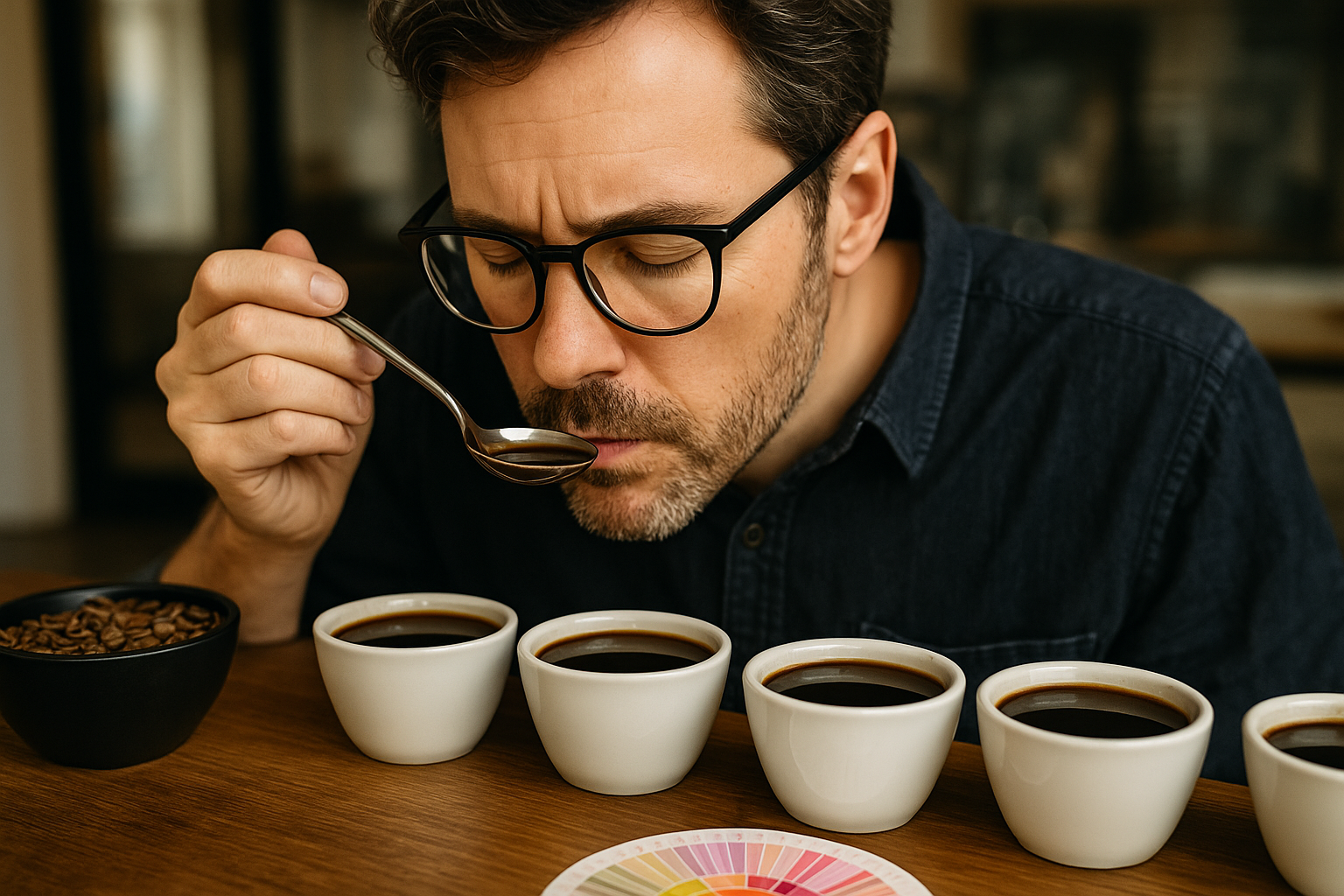Coffee is more than just a beverage—it is a sensory experience filled with complex aromas, flavors, and textures. Professional tasters, also known as Q graders or coffee sommeliers, dedicate years to mastering the art of tasting coffee.
While you may not want to become a certified expert, you can still learn how to appreciate coffee like one.
By developing your tasting skills, you gain a deeper understanding of what makes each cup unique and how to identify qualities that go beyond “good” or “bad.”
Why Coffee Tasting Matters
Learning to taste coffee properly allows you to:
- Recognize flavor profiles and subtle differences between beans.
- Appreciate the effect of origin, roast level, and brewing method.
- Discover personal preferences to guide your purchases.
- Elevate your daily coffee routine into something more mindful and enjoyable.
Preparing for a Coffee Tasting
Before you begin tasting, set the stage properly.
- Choose freshly roasted beans: Freshness is critical for flavor.
- Use filtered water: Coffee is 98% water, so clean water ensures clarity in taste.
- Brew correctly: Consistency matters. Use the same ratio of coffee to water, grind size, and method for fair comparisons.
- Neutralize your palate: Avoid spicy foods, gum, or strong flavors before tasting. Water and plain crackers can help reset your mouth between samples.
The Four Stages of Tasting
Experts often evaluate coffee using four key steps: aroma, flavor, body, and aftertaste.
Step 1: Aroma
Smelling coffee before tasting it is essential. Aroma gives the first impression and prepares your brain for what’s to come.
- Inhale deeply right after grinding beans. This reveals primary aromas like floral, nutty, fruity, or earthy notes.
- Smell the brewed coffee both before and during sipping.
Step 2: Flavor
Take a small sip and let it cover your tongue. Notice the initial taste (sweet, bitter, acidic, or savory) and how it evolves. Coffee flavors can range from chocolate and caramel to citrus, berries, and spices.
Step 3: Body
Body refers to the weight and texture of coffee in your mouth. Is it light and tea-like, medium and smooth, or heavy and syrupy? Different brewing methods highlight body differently—French press enhances heaviness, while pour-over highlights clarity.
Step 4: Aftertaste
The lingering flavor after swallowing is called aftertaste or finish. High-quality coffee leaves a pleasant, clean finish, while lower-quality coffee may leave bitterness or an ashy taste.
The Role of Acidity
In coffee tasting, “acidity” doesn’t mean sourness. Instead, it refers to brightness and liveliness in flavor. For example:
- African coffees often have bright citrus or berry-like acidity.
- Latin American coffees might carry crisp apple or cherry notes.
- Asian coffees tend to have lower acidity with earthy, chocolate-like flavors.
Recognizing acidity helps you identify the origin and complexity of the coffee.
Using the Coffee Flavor Wheel
Professionals often use the Specialty Coffee Association’s (SCA) flavor wheel. It categorizes flavors into families like fruity, nutty, floral, or spicy, then breaks them down into specific notes like mango, hazelnut, or cinnamon.
You don’t need to memorize the wheel—just use it as a guide to describe what you taste more accurately.
Slurping: Why Experts Do It
If you’ve ever seen a professional taster, you may have noticed them slurping coffee loudly. This isn’t just for show.
Slurping aerates the liquid, spreading it across your palate and enhancing aroma perception. It helps you notice more subtle flavors and textures.
Comparing Coffees Side by Side
One of the best ways to train your palate is to taste two or more coffees at once. Compare beans from different regions or roast levels. For example, brew one Ethiopian light roast and one Colombian medium roast.
Notice differences in aroma, acidity, sweetness, and aftertaste. The contrast will sharpen your ability to identify unique qualities.
Training Your Palate
Like any skill, tasting improves with practice. Try these exercises:
- Smell spices and fruits in your kitchen to build your flavor memory.
- Taste blindfolded to sharpen your sense of smell and taste.
- Keep a journal of your coffee experiences, writing down notes for each cup.
Common Mistakes When Tasting Coffee
- Drinking too hot: Let coffee cool slightly before tasting. Cooler temperatures reveal more flavors.
- Using flavored creamers or sugar: These mask the natural taste. Taste black coffee first before adding extras.
- Rushing: Take your time to notice details instead of gulping.
Bringing Expert Tasting into Everyday Life
You don’t need professional equipment to taste coffee like an expert at home. A simple mug, fresh beans, and a mindful approach are enough.
Over time, your appreciation will grow, and you’ll make better choices when buying coffee.
Whether you prefer bright, fruity flavors or smooth, chocolatey ones, knowing how to identify them will make your coffee routine more enjoyable.
Final Thoughts
Tasting coffee like an expert is about slowing down and paying attention. By focusing on aroma, flavor, body, and aftertaste, you open yourself to a deeper experience with every cup.
With practice, you’ll notice nuances you never paid attention to before, turning an ordinary cup into a sensory adventure. Coffee tasting is not about right or wrong—it’s about discovering what you love most in a cup.
